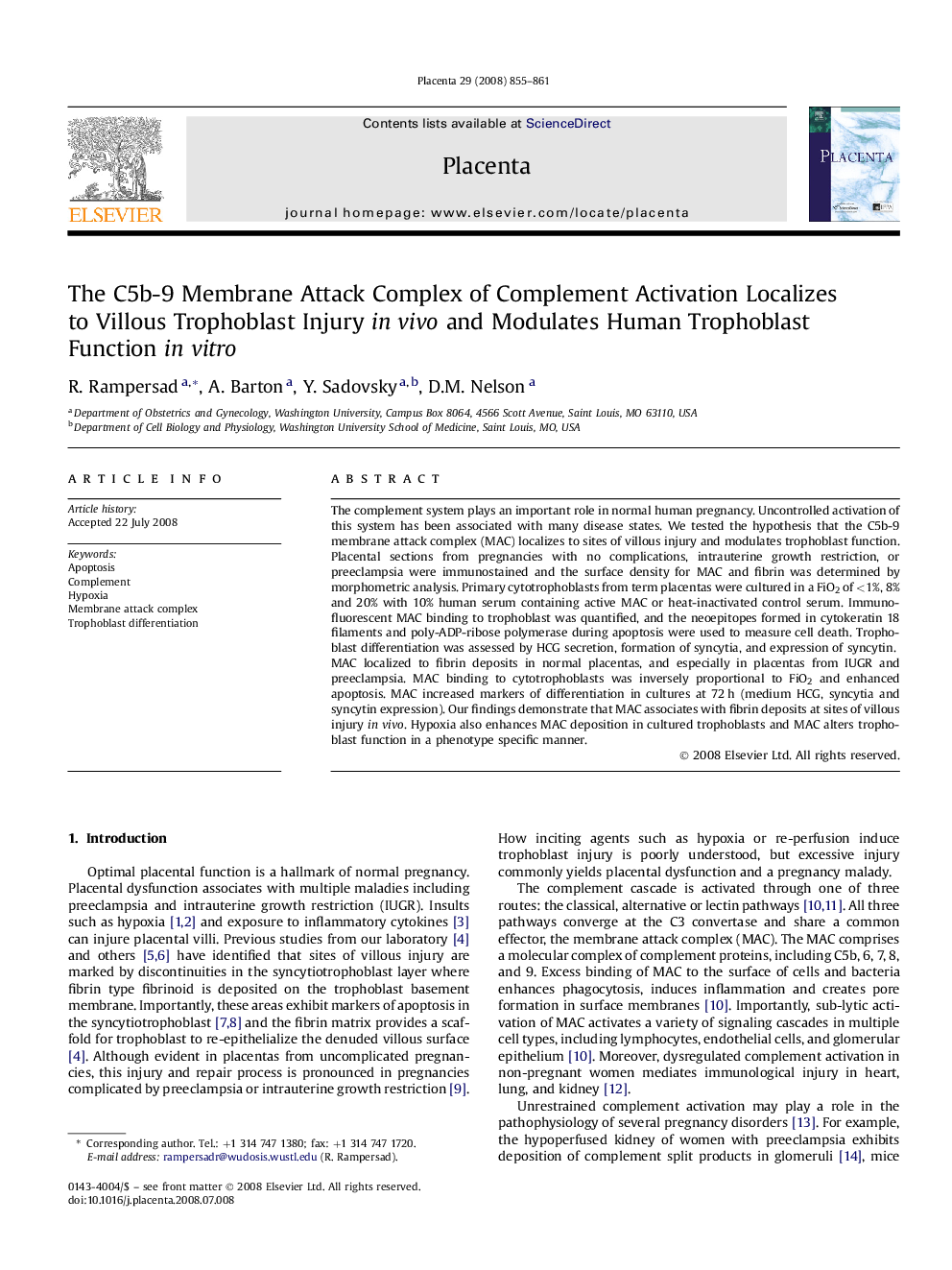| Article ID | Journal | Published Year | Pages | File Type |
|---|---|---|---|---|
| 2790044 | Placenta | 2008 | 7 Pages |
The complement system plays an important role in normal human pregnancy. Uncontrolled activation of this system has been associated with many disease states. We tested the hypothesis that the C5b-9 membrane attack complex (MAC) localizes to sites of villous injury and modulates trophoblast function. Placental sections from pregnancies with no complications, intrauterine growth restriction, or preeclampsia were immunostained and the surface density for MAC and fibrin was determined by morphometric analysis. Primary cytotrophoblasts from term placentas were cultured in a FiO2 of <1%, 8% and 20% with 10% human serum containing active MAC or heat-inactivated control serum. Immunofluorescent MAC binding to trophoblast was quantified, and the neoepitopes formed in cytokeratin 18 filaments and poly-ADP-ribose polymerase during apoptosis were used to measure cell death. Trophoblast differentiation was assessed by HCG secretion, formation of syncytia, and expression of syncytin.MAC localized to fibrin deposits in normal placentas, and especially in placentas from IUGR and preeclampsia. MAC binding to cytotrophoblasts was inversely proportional to FiO2 and enhanced apoptosis. MAC increased markers of differentiation in cultures at 72 h (medium HCG, syncytia and syncytin expression). Our findings demonstrate that MAC associates with fibrin deposits at sites of villous injury in vivo. Hypoxia also enhances MAC deposition in cultured trophoblasts and MAC alters trophoblast function in a phenotype specific manner.
